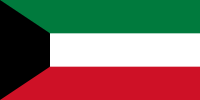List of Intangible Cultural Heritage elements in Kuwait

The United Nations Educational, Scientific and Cultural Organisation (UNESCO) intangible cultural heritage elements are the non-physical traditions and practices performed by a people. As part of a country's cultural heritage, they include celebrations, festivals, performances, oral traditions, music, and the making of handicrafts.[1] The "intangible cultural heritage" is defined by the Convention for the Safeguarding of Intangible Cultural Heritage, drafted in 2003[2] and took effect in 2006.[3] Inscription of new heritage elements on the UNESCO Intangible Cultural Heritage Lists is determined by the Intergovernmental Committee for the Safeguarding of Intangible Cultural Heritage, an organisation established by the convention.[4]
Kuwait signed the convention on 9 April 2015.
Intangible Cultural Heritage elements[edit]
Representative List[edit]
| Name | Image | Year | No. | Description |
|---|---|---|---|---|
| Traditional weaving of Al Sadu +[a] | 2020 | 01586 | Al Sadu, or simply Sadu, describes an embroidery form in geometrical shapes hand-woven by Bedouin people. | |
| Arabic calligraphy: knowledge, skills and practices +[b] | 2021 | 01718 | The artistic practice of writing Arabic letters and words to convey grace and beauty. | |
| Date palm, knowledge, skills, traditions and practices +[c] | 
|
2022 | 01902 | The Palm tree is considered to be a part of the history of the countries where it is a source for farmers, craftsmen, handicrafts owners, merchants, factory owners and food companies. |
Good Safeguarding Practices[edit]
| Name | Year | No. | Description |
|---|---|---|---|
| Al Sadu Educational Programme: Train the trainers in the art of weaving | 2022 | 01905 | Al Sadu, or simply Sadu, describes an embroidery form in geometrical shapes hand-woven by Bedouin people. |
Notes[edit]
- ^ Shared with Saudi Arabia.
- ^ Shared with Algeria, Bahrain, Egypt, Iraq, Jordan, Lebanon, Mauritania, Morocco, Oman, Palestine, Saudi Arabia, Sudan, Tunisia, the United Arab Emirates, and Yemen.
- ^ Shared with Bahrain, Egypt, Iraq, Jordan, Mauritania, Morocco, Oman, Palestine, Qatar, Saudi Arabia, Sudan, Tunisia, the United Arab Emirates, and Yemen.
References[edit]
- ^ "What is Intangible Cultural Heritage?". UNESCO Intangible Cultural Heritage. Retrieved 13 January 2024.
- ^ "Text of the Convention for the Safeguarding of Intangible Cultural Heritage". UNESCO Intangible Cultural Heritage. Retrieved 13 January 2024.
- ^ "The States Parties to the Convention for the Safeguarding of the Intangible Cultural Heritage (2003)". UNESCO Intangible Cultural Heritage. Retrieved 13 January 2024.
- ^ "Functions of the Intergovernmental Committee for the Safeguarding of Intangible Cultural Heritage". UNESCO Intangible Cultural Heritage. Retrieved 13 January 2024.
External links[edit]
- UNESCO Intangible Cultural Heritage: Official site
- UNESCO Intangible Cultural Heritage in Kuwait: Official site


